4 F. high in the Twin Cities Tuesday.
24 F. average high on December 30.
2 F. high on December 30, 2013.
3″ snow on the ground at MSP International Airport.
5.9 F. In spite of the cold snap December temperatures are nearly 6F warmer than average, to date.
December 30, 1999: Balmy end to the 2nd millennium over Minnesota with temperatures in the 30’s over central and southern Minnesota near midnight.
December 30, 1937: Damage done by flood at Grand Marais. 18 inches of snow dumped on Grand Portage.
December 30, 1913: New Ulm had its fortieth consecutive day without precipitation. Source: MPX NWS.

Sweaty Gophers
One of the many benefits of being a meteorologist is the steady stream of warm weather forecast requests that come in every winter. Each question warms my heart – and reminds me just how hard it is to use Google.
“Paul, I’m going to St. Thomas in February. Will it be 80F or 82F?” Or “Dude, I’m heading to Orlando to watch the Gophers demolish Mizzou! Will the weather be good?”
Uh huh. Yep.
Florida-bound fans should pack sunscreen, shorts and prepare for serious atmospheric-disorientation. Factoring a Minnesota wind chill and Orlando heat index you’ll experience a 100-degree temperature jump. Dew points hit 70F in Orlando with weekend highs near 80. A few poor souls may complain about the humidity.
That won’t be a problem here anytime soon. Canada treats us to its biggest export as waves of numbing air surge south. Next week may be one of the two coldest weeks of winter; the mercury has trouble rising above zero Sunday and Monday, in spite of a pleading sun.
Before you hitchhike to Laredo hang on: ECWMF guidance brings 30s (above!) surging back into Minnesota late next week.
That’s what this winter will be like: frequent swings, from subzero lows to drippy thaws. Get ready.
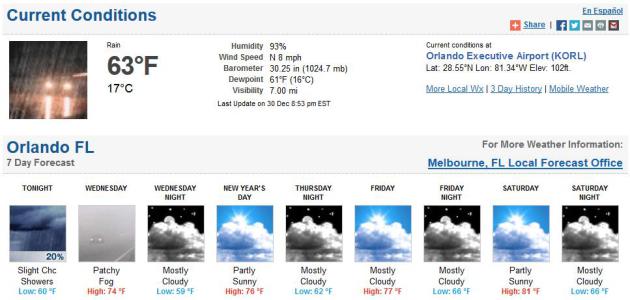
Latest Orlando Forecast. The sun may peek through for Thursday’s Citrus Bowl in Orlando with highs in the low to mid 70s and high humidity levels – odds favor a dry sky. It warms up a few more degrees over the weekend; a true taste of summer across central Florida. I really wish I was there, but the next best thing is checking the Orlando forecast, courtesy of NOAA.

How To Beat The Winter Blues. PBS’s Next Avenue has a timely article with good tips on steps you can take to better weather the dark, depressing days of winter; here’s an excerpt: “…For bright light therapy to work, you will need between 30 and 90 minutes of exposure to it each day, according to the APA. Your doctor can give you instructions. One method is to sit about two feet from the light with your eyes open, but without looking directly at the lamp. Early mornings, when the therapy can simulate sunrise, may be best. A Minneapolis man said he takes his light therapy lamp out of the basement each year in early- to mid-October. “I know it’s coming, that dark period,” said Lee, 60, who asked to be identified only by his first name to avoid the stigma associated with depression. He uses the lamp for about a half-hour each morning, while reading the paper and eating breakfast...”

How To Choose A Light Box. The Mayo Clinic has some good advice on how to choose a light box, one that simulates sunshine and helps to relieve symptoms of SAD, Seasonal Affective Disorder. Here’s an excerpt: “…A light box mimics outdoor light. Researchers believe this type of light causes a chemical change in the brain that lifts your mood and eases other symptoms of SAD. Most people use light boxes for a minimum of 30 minutes each morning. You can buy a light box over the counter, or your doctor may recommend a specific light box. Most health insurance plans do not cover the cost…”
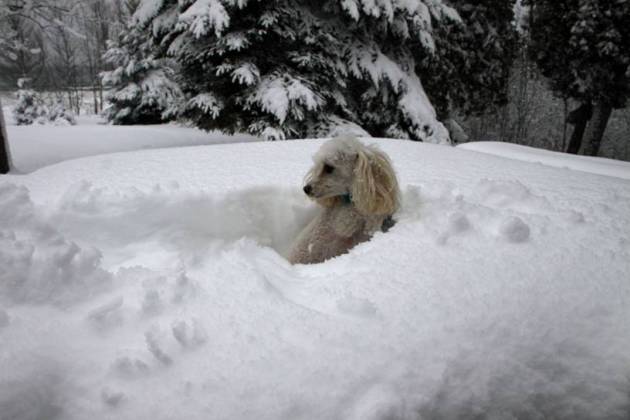
Protect Your Pet During Winter and Cold Weather. Here’s a clip from an article at The Humane Society with a few good reminders for all of us who love our pets and want to keep them safe yearround: “…The best prescription for winter’s woes is to keep your dog or cat inside with you and your family. The happiest dogs are those who are taken out frequently for walks and exercise but kept inside the rest of the time. Don’t leave pets outdoors when the temperature drops. During walks, short-haired dogs may feel more comfortable wearing a sweater. No matter what the temperature is, windchill can threaten a pet’s life. Pets are sensitive to severe cold and are at risk for frostbite and hypothermia during extreme cold snaps. Exposed skin on noses, ears and paw pads can quickly freeze and suffer permanent damage…”

Windchill Outlook. Our internal “Aeris” product compares a number of models, in this tracking future wind chill; expected to dip below zero again early next week, possibly bottoming out near -27F next Wednesday morning before recovering late next week into the second week of January. Source: HAMweather.
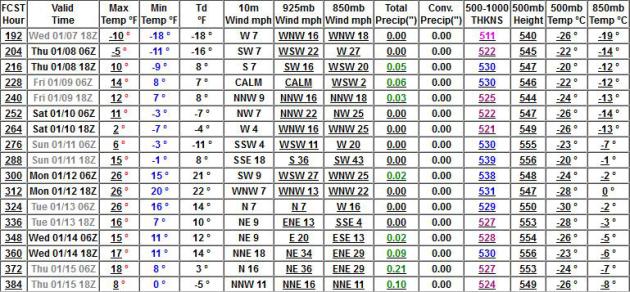
Second Week of January: Cold, But Not Quite Polar. At this point I’m happy to see temperatures above zero; 20s is a bad Club Med vacation. GFS model data shows highs mostly in the teens and 20s, a night or two dipping below zero, but not outrageously cold, not for Minnesota.

Ripe For Snow by Mid-January? This may be wishful thinking on my part, but jet stream wind predictions for Tuesday evening, January 13, show a southwest flow aloft, hinting at a series of storms passing just south/east of Minnesota; enough cold air in place for accumulating snow. We’ll see.

Positive Phase of Arctic Oscillation: Limit To How Cold It Can Get? A strongly negative phase of AO and NAO correlates with a wavier jet stream, higher amplitude flow capable of pulling down (and sustaining) bitter winds from northern Canada for an extended period of time. The AO was negative in mid-November, when we had our early snowstorm and relatively early outbreak of numbing air. Then the AO tracked more positive in mid-December, correlating with a streak of 40s and 3 days above 50F. The forecast into mid-January calls for a positive AO, which leads me to believe that any bitter air will be relatively brief, at least compared to last winter. Source: NOAA.
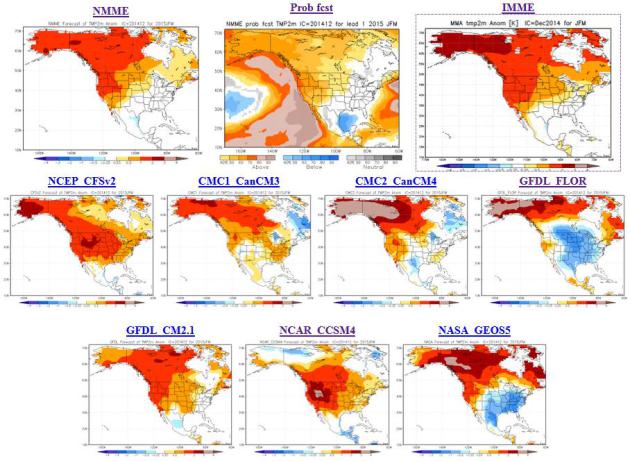
Climate Model Temperature Outlook: January – March, 2015. We’ll see plenty of cold frontal passages this winter; of that I am fairly certain. This doesn’t look like 2012, when spring came roaring back in early March. But I still see little evidence that a persistent blocking pattern, similar to last winter, will feed a steady supply of Arctic air into the eastern two thirds of America. As I’ve been explaning (ad nauseum) for weeks now the pattern appears to be more variable, more frequent swings between Canadian air and Pacific air, as temperatures alternative between (brief) subzero spells and 30s (above). All of NOAA’s climate models (except for GFDL FLOR) show average temperatures or a mild bias for Minnesota during the first quarter of 2015.
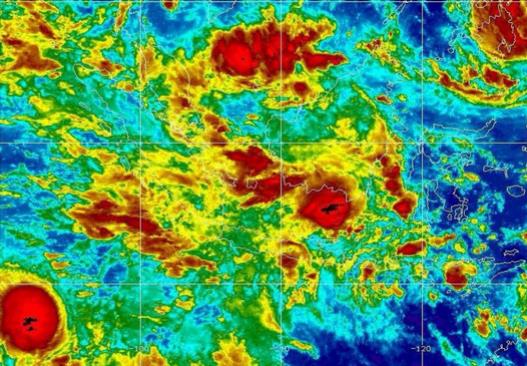
The Challening Weather Conditions When Air AsiaFlight 8501 Disappeared. Was weather a factor? It’s too early to know for sure, but meteorologist Jason Samenow does a good job capturing the various weather threats in the vicinity of the doomed flight at The Washington Post’s Capital Weather Gang; here’s a snippet: “…However, Vasquez believes it is plausible the aircraft encountered icing. Icing refers to build-up of ice on the aircraft – which adds weight to the aircraft and disrupts the flow of air over the wings. Vasquez concludes: “… it appears that weather was a factor, or was a compounding factor. The most likely hazard, if weather was a factor, appears to be icing. This is only an assessment of best available meteorological information, and is not a final determination on the cause of the incident…”
Image credit above: “Infrared satellite imagery from around the time AirAsia flight 8501 disappeared portrays large thunderstorms in the vicinity.” (NOAA)

2014 A Quiet Year For Weather Disasters In The U.S. Here’s an excerpt of an interesting update from USA TODAY: “…Not since Superstorm Sandy devastated the Northeast in 2012 has a single natural disaster cost the U.S. tens of billions in damage, according to a report released today by CoreLogic. Sandy cost the U.S. about $70 billion. “This is two straight years without big disasters,” said Tom Jeffery, a senior hazard scientist at CoreLogic, a private research and consulting company based in Santa Ana, Calif., that provides information and services to businesses and government…” (Image: Climate Nexus).
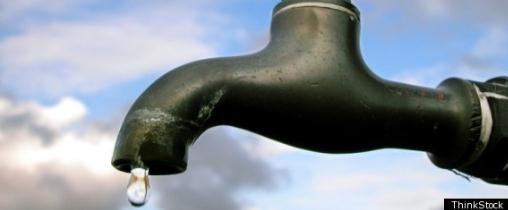
The Politics of Drinking Water. Here’s an excerpt of an excellent story at The Atlantic about something many of us take for granted, but probably shouldn’t, access to clean, reliable drinking water: “…Most Americans take cheap, safe drinking water for granted. Globally, one out of 10 people can’t access clean water. Some 1,400 children die each day from water-related diseases. Unless there’s a spill or equipment failure, these numbers exclude U.S. residents. Across the 50 states, 155,000 public water systems treat, filter, and deliver 100 gallons per person per day, all for the low cost of 20 cents per gallon. Contaminant-free drinking water hasn’t always been part of the American experience…”
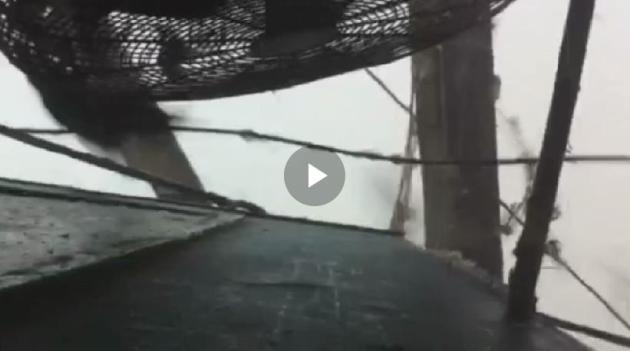
Newly Released Cell Phone Video Captures Chilling Mississippi Tornado. The video is pretty amazing; here’s an excerpt and link from The Weather Channel: “Newly-released cell phone video shows the chilling seconds as an EF3 tornado ripped through Columbia, Mississippi, Tuesday, Dec. 23. The video comes from William Bozeman’s cell phone. He was at work when the storm unfolded. “It happened so fast, I really didn’t have time to do anything,” he told The Weather Channel…”
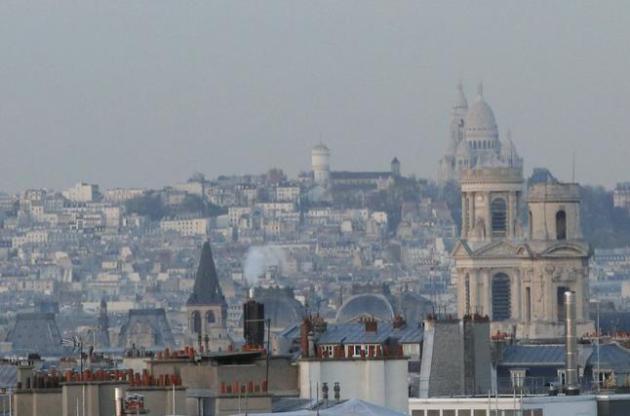
Pollution Around The World: A Matter of Choices. Air pollution as a rule is considerably worse now in Europe than it is here in the USA; here’s an excerpt from a story at The New York Times: “…Europe is a different story. The average European city has pollution levels that are double what the W.H.O. considers safe, at 21.7 micrograms per cubic meter. In total, 93 percent of Europe’s cities have unsafe levels of pollution when measured against the W.H.O.’s standards. The E.U.’s standard, against which member countries base their regulations, is much more lax than both the W.H.O. and the American standards, at 25 micrograms per cubic meter. Only a quarter of the E.U.’s cities fail to meet that standard. In the United States, only Fresno, Calif., would…”
Photo credit above: “Chimneys are seen with the Sacre Coeur basilica of Montmartre in background, rear right, from a roof top in Paris, Tuesday Dec. 9, 2014. Regional authorities decreed that as of Jan. 1, no home in Paris or the surrounding region will be allowed to cozy up to a fireplace around blazing logs. Their argument : A quarter of the French capital’s pollution comes from wood-burning fires.” (AP Photo/Francois Mori).

The Most Fascinating News of 2014. Dave Pell does a very good job of capturing some of the most important, odd and unusual stories with Next Draft. Check out his list of some of the must-read stories of 2014.

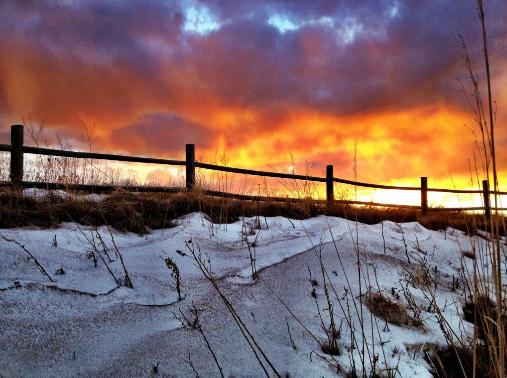
TODAY: Sunny and windy. AM wind chill: -20. Winds: SW 15-25. High: 14
NEW YEAR’S EVE: Partly cloudy, still chilly. Low: 11
NEW YEAR’S DAY: Mostly cloudy, passing flakes in the air. High: 24
FRIDAY: Early sun, clouds increase PM hours. Wake-up: 12. High: 22
SATURDAY: Snow up north, metro flakes, gusty. Wake-up: 15. High: 31
SUNDAY: Sunny, harsh wind. Feels like -15. Wake-up: 0. High: 3
MONDAY: Mostly cloudy, less wind. Feels like January. Wake-up: -10. High: 1
TUESDAY: Burst of light snow possible. Wake-up: -6. High: 8
Climate Stories…

2014: The Year Climate Change Undeniably Arrived. Here’s an excerpt of a good summary of the year’s climate headlines from InsideClimate News: “…All year long, from the Antipodes to the Aleutians, the changing global climate plagued the planet. If 2014 does not, in the final reckoning, prove to be the hottest year ever recorded, it will come very close. As a landmark scientific review published by several U.S. government agencies declared in May: “Climate change, once considered an issue for a distant future, has moved firmly into the present.” Of course, it did not happen all at once. The Australian heat wave had lingered over from 2013. Every decade is now warmer than the one before. Each new year is one of the warmest on record. Young adults have never lived through a month when global temperatures were cooler than the old normal…”
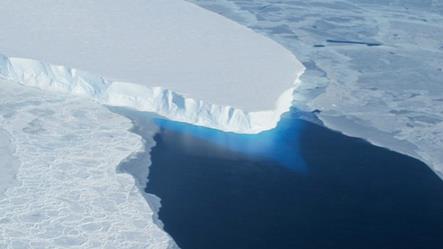
Fate of Earth’s Ice Comes Further Into Focus. Here’s an excerpt from a 2014 summary of the cryosphere from Climate Central: “…The changes being wrought at both poles came into starker relief in 2014: While Antarctic sea ice reached a record amount, Arctic sea ice continued its inexorable decline, and at a much faster rate than the Antarctic increase. At the same time, glaciers in Antarctica and Greenland were found to be even more vulnerable to melt than previously thought. One scientist said that the retreat and melt of some of Antarctica’s fastest-moving glaciers had become “unstoppable...”
Photo credit above: “Antarctica’s Twaites Glacier, one of the six glaciers of the Amundsen Sea Embayment of the West Antarctic Ice Sheet.” Credit: NASA .
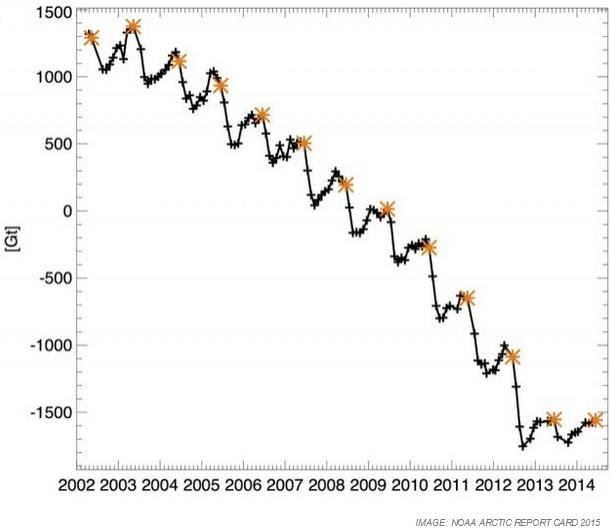
The 2014 “Arctic Report Card” Is Here, And Yes, It Suggests Global Warming. Andrew Freedman has the story at Mashable; here’s an excerpt that got my attention: “…Ice loss from Greenland, Antarctica and glaciers around the world are now the leading contributors to sea level rise. The fate of the ice sheets will determine how much sea levels will increase during the next several decades and beyond. Here is what the mass loss trends look like, with what may be a temporary leveling off between 2013-14, depending on a variety of factors, including the prevailing weather patterns during the summer of 2015...”
Image credit: NOAA Arctic Report Card 2015.
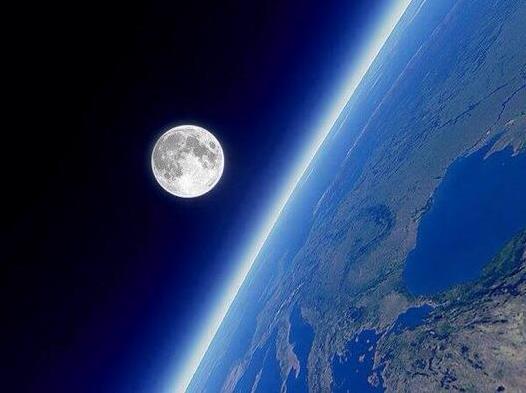
The Growing Level of Environmental Awareness. Here’s an excerpt of an Op-Ed from Steve Cohen, Executive Director at Columbia University’s Earth Institute: “…The goal is a high consumption economy that protects the planet while it enables economic security, leisure time and personal growth for people everywhere. For this to happen we need to change the definition of consumption. In essence, we need to increase the proportion of software (ideas, education, social interaction and entertainment) to hardware (material goods) in the economy. We need to ensure that the material part of the economy reduces the one-time use of non-renewable resources and increases the use of renewable resources…”

